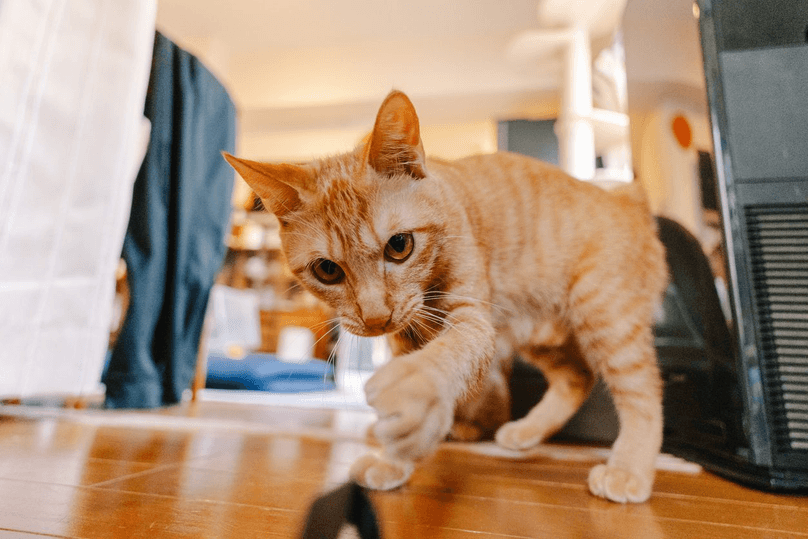
If you’ve spent time on social platforms like TikTok, you’ve most likely seen kitties of the orange variety flexing their spicy sides. Here at Felix, we’ve dubbed this phenomenon Orange Cat Energy (OCE). The consensus seems to imply that orange cats are chaotic and, even worse, not very smart (albeit sweet and loving). But what exactly is OCE, and is it fact or just a myth? Let’s explore the behaviors behind these fabulous orange felines and whether there are actual scientific insights that support the existence of OCE.
What do the experts say?
There haven’t been many studies exploring cat behavior and coat color, but one survey does in fact dispel the correlation between behavior and coat color. Experts from the University of California found that while some stereotypes about cat behavior and coat color might hold a grain of truth—like non-agouti (solid-colored) cats being more friendly—the relationship isn’t as straightforward as people might think. They confirm that individual cats have unique personalities and behaviors that can be identified and somewhat predicted by their owners. However, it also highlights that not all stereotypes are accurate, as it found evidence challenging the idea that coat color alone determines a cat’s behavior.
Essentially, while there may be some patterns in behavior based on coat color, each cat is an individual, and broad stereotypes about behavior based on color can be misleading. Its more likely that the cat parents who attribute behavior to coat color may be biased by preconceived notions, such as those generated after watching videos of orange cats acting erratically.
This confirmation bias leads some to believe that the iconic orange coat is the cause of any chaotic behavior. But let’s be real—we all know that cats of every color have their share of the zoomies, knock over expensive items, and wage war against our bare ankles. This playful unpredictability is one of the many reasons why we love them.
Cat color can be tied to the sex of the cat
We’ve conceded that the coat doesn’t dictate the cat. But what else could be egging on the OCE rumors running rampant online? Well, here’s a fun fact: orange cats are generally always boys. According to BBC Science Focus Magazine, “The ‘ginger gene’ which produces the orange color is on the X chromosome. Females have two X chromosomes and so need two copies of this gene to become ginger, whereas males need only one. This means there are roughly three males to one female ginger cat. Ginger tom cats father tortoiseshell or ginger females. If both parents are ginger, then they will have all ginger kittens as well.”
So, cat people, is the myth of the chaotic orange cat more of a tale of naughty-whiskered boys?
Boys vs girls – what cat gender is better behaved?
At a surface level, male cats (after being neutered) are known to be cuddly, friendly sidekicks—with higher energy than female cats. Female cats are known to be a bit more aloof but keep their maternal instincts after spaying; typically the ones to cuddle up with you when you’re not feeling well.
But, this also isn’t scientific and can lead to unfair stereotypes. A cat’s genetics and the way you raise them shapes quite a bit of their personality. Why pass by a sweet female kitty in the shelter because you fear she may be aloof?
Just like the misconceptions surrounding black cats bringing bad luck, it’s unfair to assume and make choices based on oversimplifications of pet behavior based on internet content. Cat behavior is complex and can vary at a cellular level and be further influenced by the environment they’ve grown up in. We’re doing our feline friends a disservice by not getting to know them for who they are, gender and coat color aside.
Like people, cats can be quiet, rambunctious, shy, extroverted, playful, or lazy—and any number of wonderful qualities that make them inherently complex and unique.
The takeaways
While it’s fun to speculate about the quirks and idiosyncrasies of orange cats, it’s important to remember that every cat is an individual. By embracing the diversity of feline personalities beyond coat color, we can cultivate a deeper understanding and appreciation for our little athletes.
So, is Orange Cat Energy a real phenomenon or just a figment of our imaginations? While the jury may still be out, one thing is clear: the world of orange cats is as diverse and complex as the rainbow of colors and patterns in their coats.